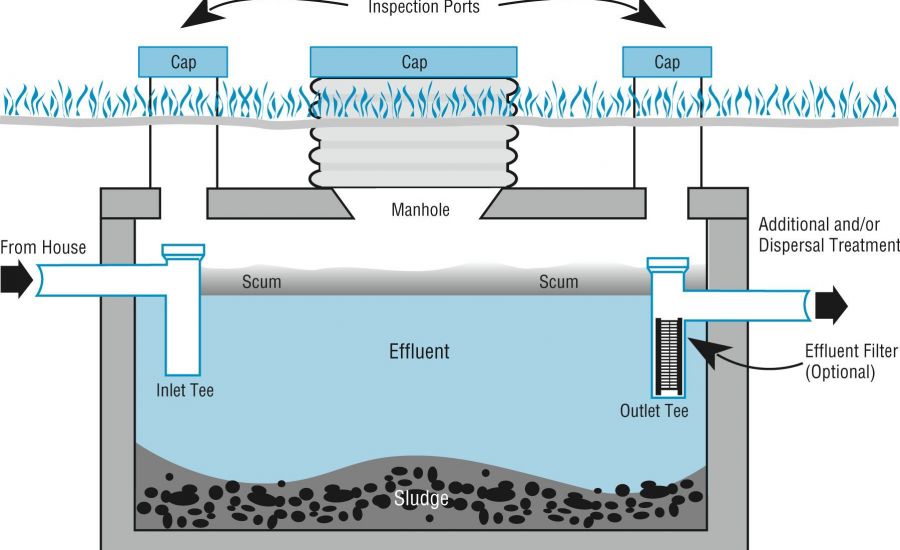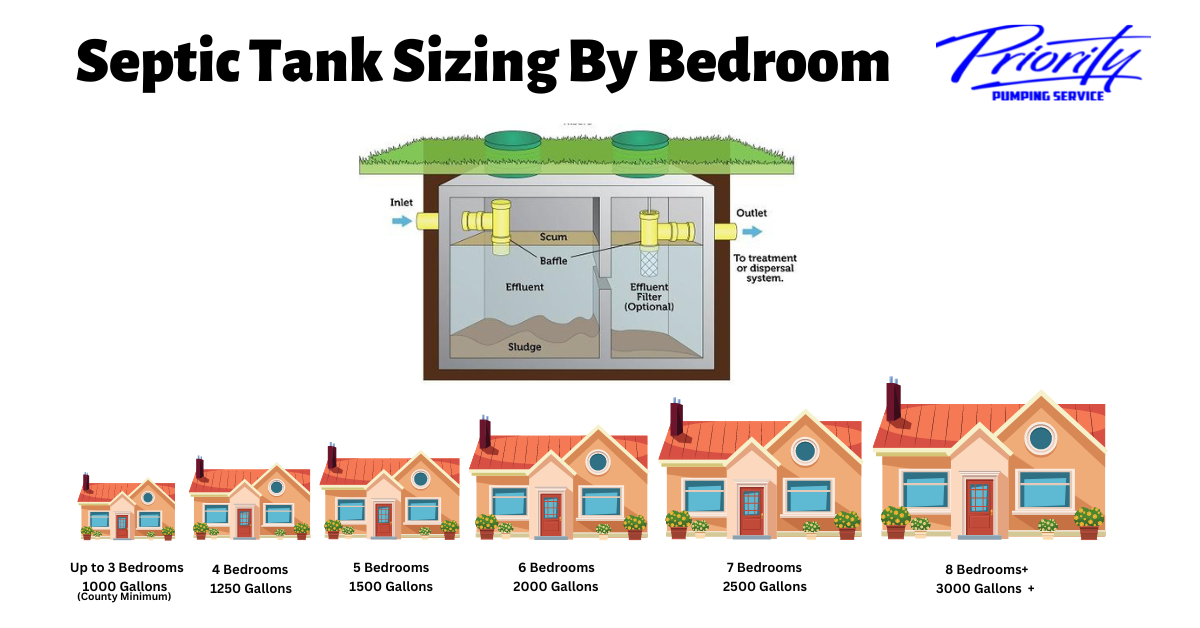Factors Affecting Septic System Size

The size of your septic system is super important, and it depends on a bunch of factors. If you get it wrong, you could end up with a system that’s too small and constantly backs up, or one that’s way too big and wastes money. So, let’s break down what goes into choosing the right size.
Number of Bedrooms and Septic System Size
The number of bedrooms in your house is a major factor in determining the size of your septic system. This is because the number of bedrooms is usually a good indicator of the number of people living in the house, which in turn influences the amount of wastewater generated. Think of it like this, the more people in the house, the more they use the toilet, shower, and do laundry, so the more wastewater they produce.
Water Usage per Person
Besides the number of bedrooms, the amount of water each person uses plays a huge role in how big your septic system needs to be. Some people are super chill about water use, while others are total water hogs. It’s all about how often they shower, how long they spend in the shower, how much they water their plants, and all that jazz. The more water people use, the more wastewater they generate, and the bigger your septic system needs to be. For example, a family of four who takes short showers and is careful about water use will need a smaller septic system than a family of four who loves long, hot showers and waters their lawn every day.
Soil Type and Drainage
The type of soil you have in your yard is super important for your septic system. Some soils are awesome at draining water, while others are like a sponge and hold onto it. This is important because the septic system relies on the soil to filter the wastewater. If the soil is super absorbent, it can handle a lot of wastewater. But if it’s super dense and doesn’t drain well, your septic system will need to be bigger to handle the same amount of wastewater.
Types of Plumbing Fixtures
The types of plumbing fixtures in your house also influence the size of your septic system. A house with a bunch of fancy toilets, showers, and washing machines that use a lot of water will need a bigger septic system than a house with standard fixtures. For example, a house with a bunch of low-flow toilets that use less water per flush will need a smaller septic system than a house with old-school toilets that guzzle water.
| Bedroom Count | Estimated Water Usage (Gallons per Person per Day) | Soil Type | Recommended Septic Tank Size (Gallons) |
|---|---|---|---|
| 2-3 | 75-100 | Well-Drained | 1,000-1,500 |
| 4-5 | 75-100 | Well-Drained | 1,500-2,000 |
| 2-3 | 75-100 | Poorly Drained | 1,500-2,000 |
| 4-5 | 75-100 | Poorly Drained | 2,000-2,500 |
Septic System Sizing Standards and Regulations: Size Of Septic For 3 Bedroom House

It’s super important to get your septic system sized correctly so it can handle all the waste your fam produces without overflowing or causing any environmental issues. So, before you even think about digging a hole, you gotta check out the local building codes and regulations in your area. They’re like the rulebook for septic systems, and they’ll tell you everything you need to know about how big your system needs to be, what kind of materials you can use, and where you can put it.
Septic Tank Sizing Standards, Size of septic for 3 bedroom house
Septic tank sizing is pretty standard across the board, but there are a few things to keep in mind. The most common standard is the “gallon per person per day” rule. This means that the tank needs to be big enough to hold a certain amount of wastewater per person, per day. So, if you have a family of four, you’ll need a bigger tank than if you live alone. There are also some other factors that can affect the size of the tank, like the amount of water you use and the type of soil in your yard.
Septic Tank Size Calculation for a 3-Bedroom House
You can use a simple formula to calculate the size of your septic tank. The formula is:
Tank Size (gallons) = Number of Bedrooms x 500 gallons
For a 3-bedroom house, the minimum tank size would be:
3 Bedrooms x 500 gallons = 1500 gallons
This means that a 1500-gallon septic tank is the minimum size required for a 3-bedroom house. But, remember that this is just a starting point. You should always check with your local building department to make sure you’re following all the rules.
Factors Affecting Septic System Size for a 3-Bedroom House
There are a bunch of factors that can affect the size of your septic system, even for a 3-bedroom house. Here’s a breakdown of some of the most important ones:
- Number of people living in the house: If you have a large family, you’ll need a bigger septic system. For example, if you have five people living in a 3-bedroom house, you might need a 2000-gallon septic tank instead of a 1500-gallon tank.
- Water usage: If you use a lot of water, you’ll need a bigger septic system. This is especially true if you have a lot of appliances that use water, like dishwashers, washing machines, and showers.
- Soil type: The type of soil in your yard can also affect the size of your septic system. If you have sandy soil, the wastewater will drain quickly, so you’ll need a smaller system. But if you have clay soil, the wastewater will drain slowly, so you’ll need a larger system.
- Climate: The climate can also affect the size of your septic system. In hot climates, the wastewater will evaporate more quickly, so you’ll need a smaller system. But in cold climates, the wastewater will freeze, so you’ll need a larger system.
Determining the Appropriate Leach Field Size
The leach field is like the final stop for your wastewater. It’s a series of underground trenches that allow the wastewater to filter through the soil and drain away. The size of the leach field depends on the amount of wastewater that needs to be filtered.
You can use a simple formula to calculate the size of the leach field:
Leach Field Size (square feet) = Septic Tank Size (gallons) x 0.05
For a 1500-gallon septic tank, the minimum leach field size would be:
1500 gallons x 0.05 = 75 square feet
This means that a 75-square-foot leach field is the minimum size required for a 1500-gallon septic tank. But, remember that this is just a starting point. You should always check with your local building department to make sure you’re following all the rules.
Alternatives to Traditional Septic Systems

Yo, so you’re thinking about a septic system for your new crib, but you’re also trying to be eco-friendly and save some cash. That’s where alternative septic systems come in. They can be a total game-changer, but it’s important to weigh the pros and cons before you go all-in.
Aerobic Treatment Units
Aerobic treatment units (ATUs) are like the fancy, eco-conscious cousins of traditional septic systems. They use a bunch of tiny microorganisms to break down waste, and they need oxygen to do their thing. This makes them way more efficient at cleaning up the water, which is super important for protecting the environment.
- Benefits: ATUs are way better at treating wastewater than traditional septic systems. They can handle more water and they produce a cleaner effluent, which means less chance of polluting the groundwater. Plus, they can be smaller than traditional systems, so they’re a good fit for smaller lots.
- Drawbacks: ATUs are more expensive to install than traditional septic systems, and they need regular maintenance to keep them running smoothly. You also need to make sure you have a reliable power source, because ATUs rely on electricity to operate.
Comparison of Septic Systems
Alright, let’s break down the different types of septic systems and how they stack up against each other.
| Feature | Traditional Septic System | Aerobic Treatment Unit |
|---|---|---|
| Wastewater Treatment | Anaerobic bacteria break down waste | Aerobic bacteria break down waste |
| Effluent Quality | Less clean, can contain harmful bacteria | Clean, safe for discharge or reuse |
| Water Capacity | Limited capacity, can overflow | Higher capacity, handles more water |
| Installation Cost | Less expensive | More expensive |
| Maintenance Cost | Lower | Higher |
| Power Requirements | None | Requires electricity |
| Environmental Impact | Higher risk of groundwater pollution | Lower risk of groundwater pollution |
| Suitability for 3-Bedroom House | Generally suitable | May be more suitable if space is limited |
Cost Savings and Environmental Advantages
You might be thinking, “Wait, these alternative systems sound way more expensive. What’s the deal?” Well, while the initial investment might be higher, there are some serious long-term benefits. ATUs can save you money on pumping costs because they produce less sludge. They also help protect the environment by reducing the amount of wastewater that ends up in our rivers and lakes. Think of it as an investment in a cleaner future!
“Using an ATU can save you money on pumping costs in the long run because it produces less sludge.”
Size of septic for 3 bedroom house – Right, so you’re thinking about getting a 3-bedroom house, yeah? Well, you’ll need to sort out the septic tank, innit. But hey, if you’re feeling fancy, why not check out the animal kingdom lodge 3 bedroom villa – it’s a proper lush retreat! But back to the septic, you’ll need to make sure it’s big enough for your needs, otherwise you’ll be in a right pickle, bruv.
Right, so you’re thinking about a 3 bed, eh? You’ll deffo need a decent septic tank, innit. Like, check out these mirembe villas 3 bedroom – they’re pretty lush. Anyway, back to the septic tank – you’ll wanna make sure it’s big enough to handle all the waste, you know, no overflowing or anything.